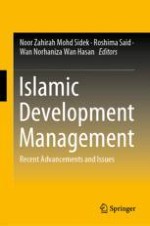2019 | OriginalPaper | Chapter
Corporate Governance Mechanisms and Financial Performance: A Comparative Study Between Local Islamic Banks and Local Conventional Banks in Malaysia
Authors : Haslindar Ibrahim, Jiunn-Shyan Khong, Zanaliza Abdullah, Afizar Amir
Published in: Islamic Development Management
Publisher: Springer Singapore
Activate our intelligent search to find suitable subject content or patents.
Select sections of text to find matching patents with Artificial Intelligence. powered by
Select sections of text to find additional relevant content using AI-assisted search. powered by
